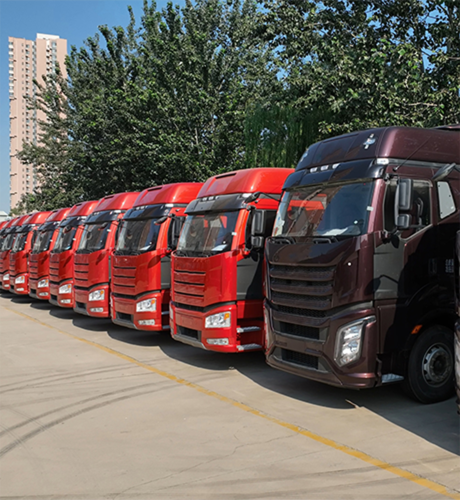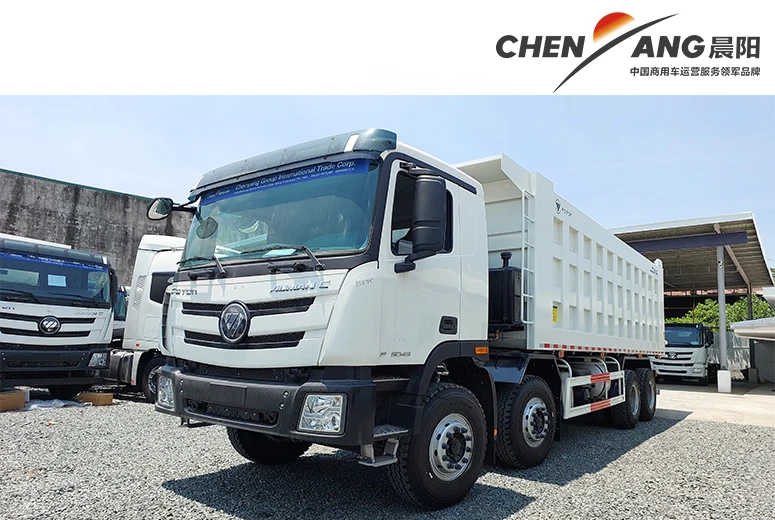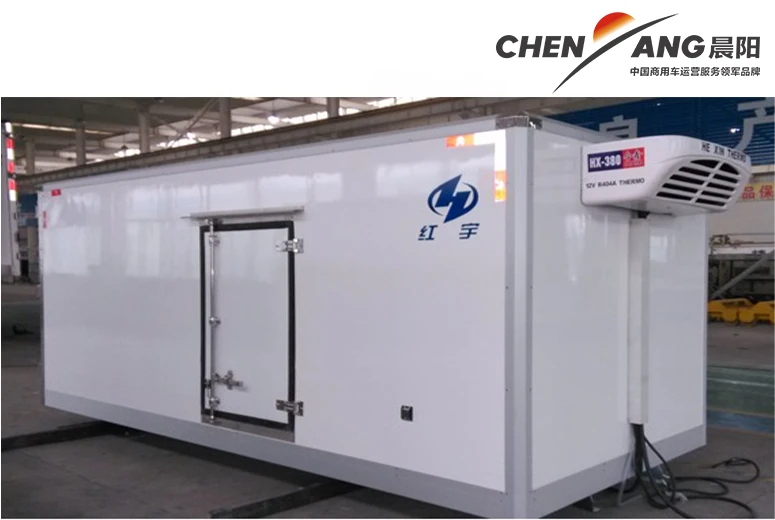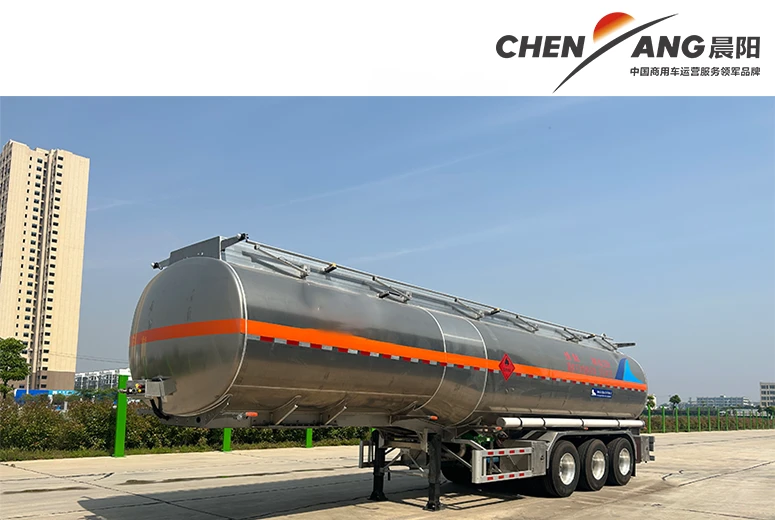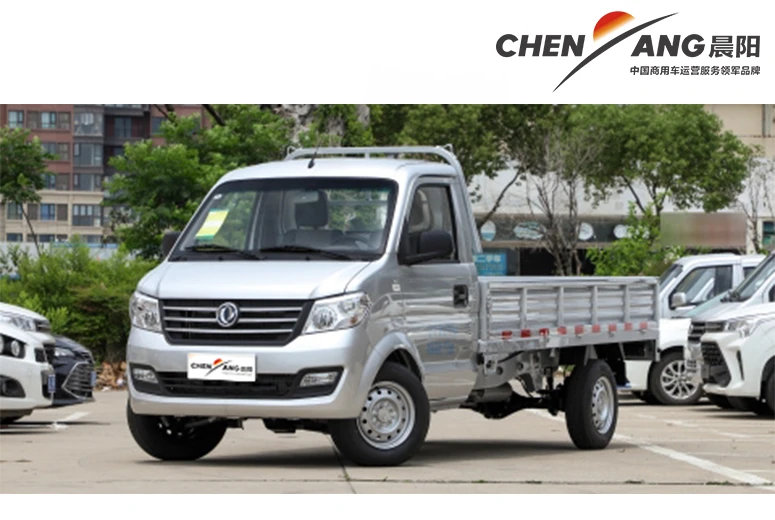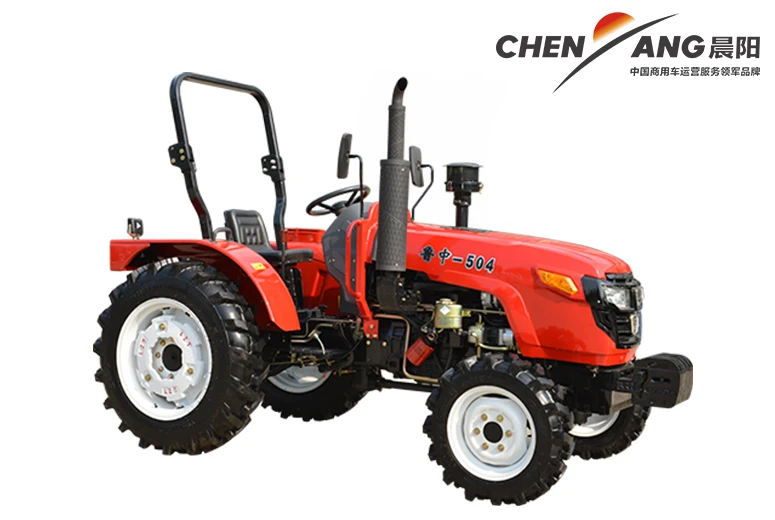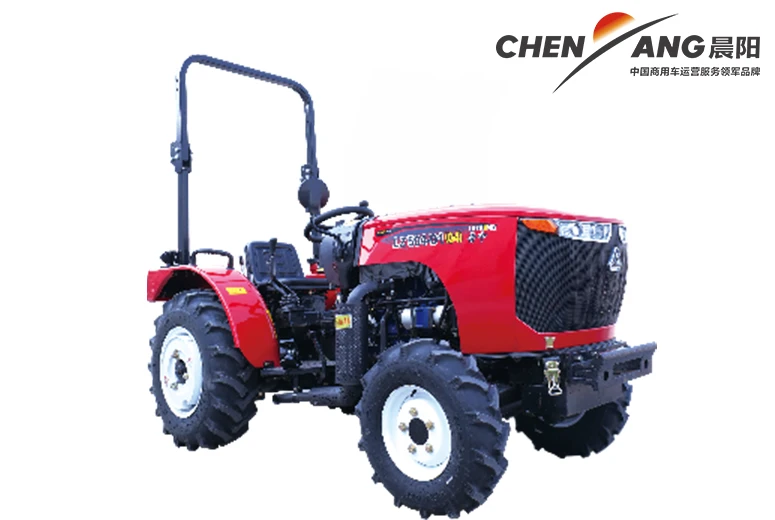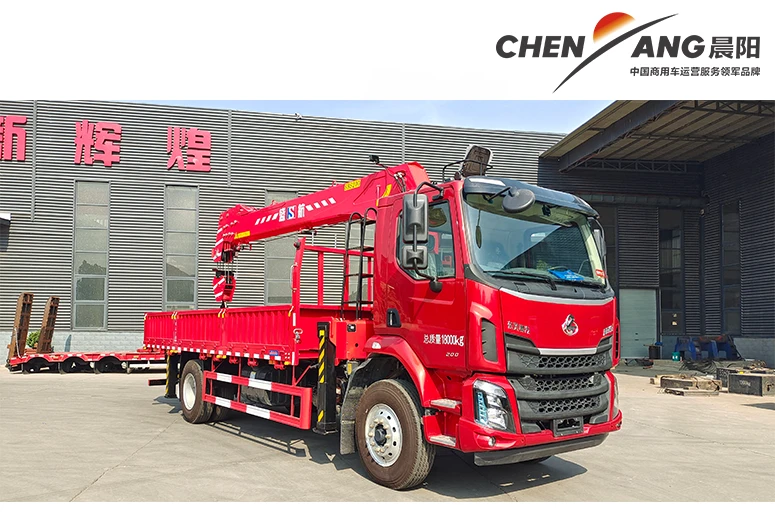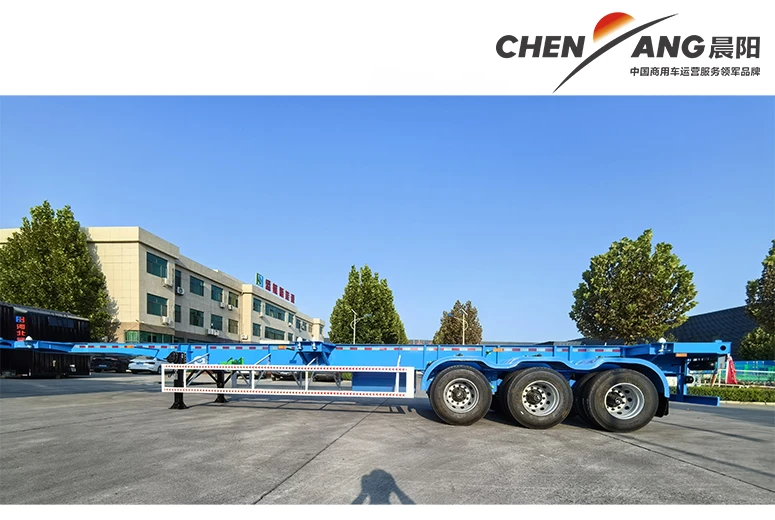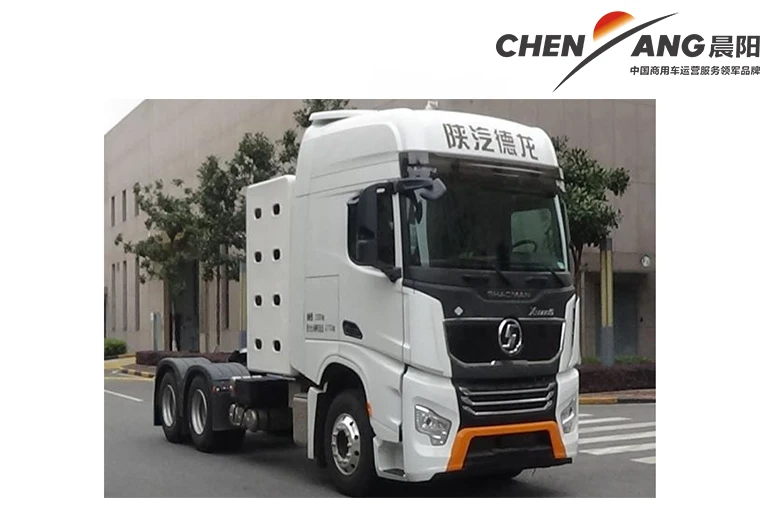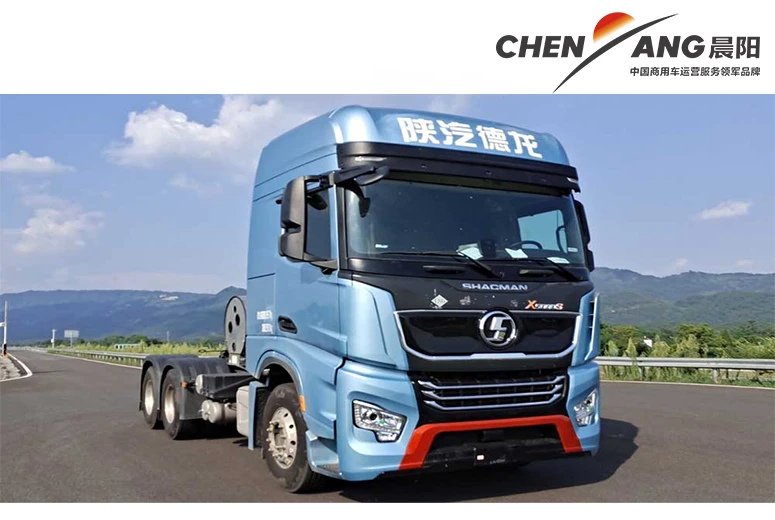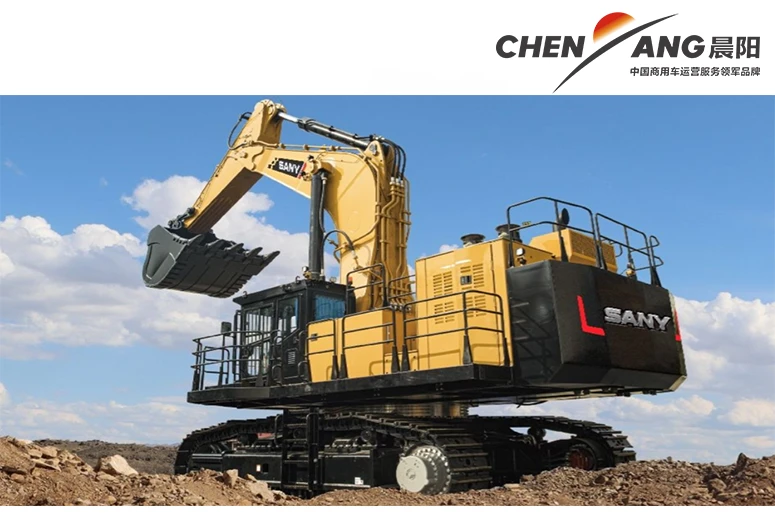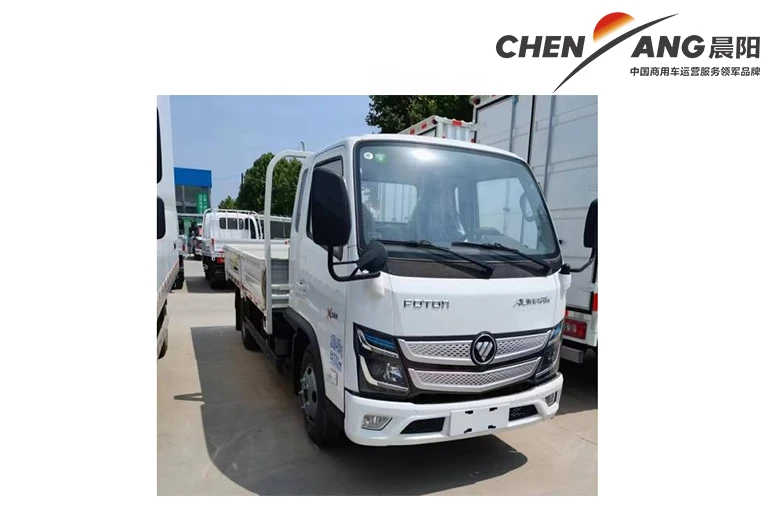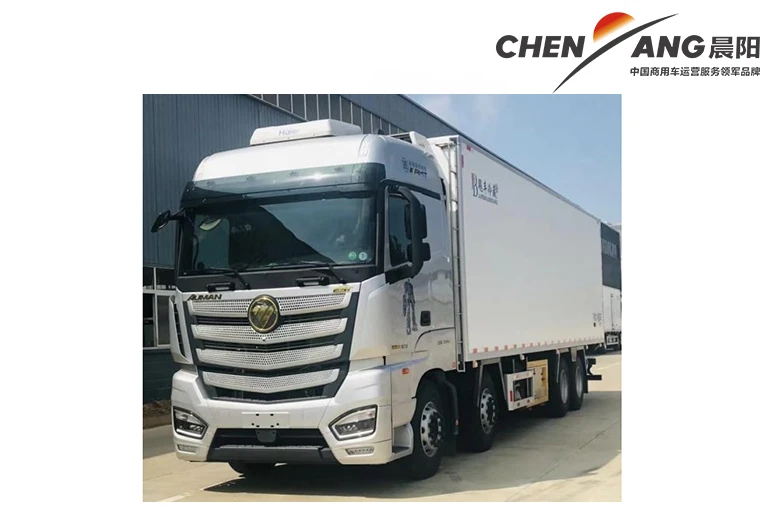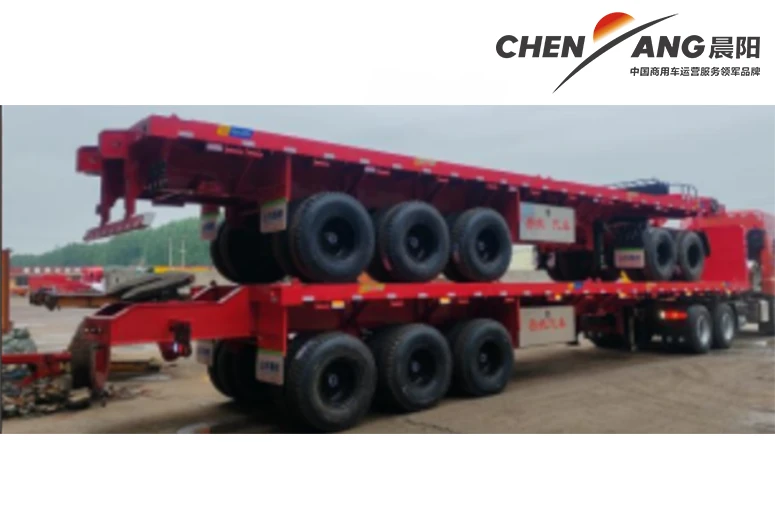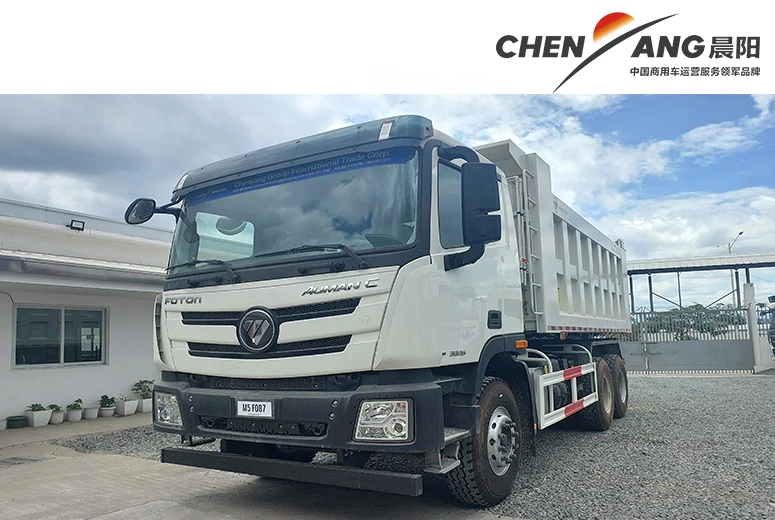Weichai Tension Pulley: OEM Quality & Reliable Engine Performance
In the intricate world of modern industrial machinery and heavy-duty vehicles, every component plays a critical role in ensuring optimal performance, efficiency, and longevity. Among these, the tension pulley stands out as an unsung hero, meticulously maintaining the precise tension of drive belts that power essential accessories like alternators, water pumps, and air compressors. This comprehensive guide delves into the specifics of the Weichai tension pulley, a component synonymous with robust construction and reliable operation, especially within the demanding environments of Weichai power systems.
We will explore the evolving industry trends that necessitate superior tensioning solutions, provide an in-depth look at the technical parameters and advanced manufacturing processes, and highlight its diverse application scenarios. Furthermore, we will compare its advantages against competitors, outline customization options, and present compelling application case studies. Our aim is to provide a holistic understanding, adhering to Google's standards by demonstrating expertise, sharing practical experience, asserting authoritativeness through industry insights, and building trust through transparent information and support.
Industry Trends and the Evolving Role of Tension Pulleys
The industrial landscape is continuously evolving, driven by demands for higher efficiency, reduced emissions, extended service intervals, and enhanced operational safety. These trends directly impact the design and performance requirements of power transmission components like the Weichai tension pulley. The shift towards more powerful, compact engines and higher auxiliary loads means that tension pulleys must withstand greater dynamic stresses and operate reliably under extreme temperature variations and vibrations.
- Enhanced Durability and Lifespan: Modern machinery operates for longer periods and requires components that minimize downtime. This necessitates tension pulleys designed for extended service life, often exceeding 500,000 kilometers for automotive applications or thousands of operational hours in industrial settings.
- Vibration Damping and Noise Reduction: With stricter noise regulations and a focus on operator comfort, tension pulleys are engineered to effectively dampen vibrations, reducing noise levels and preventing premature wear on belts and bearings.
- Material Science Advancements: The adoption of advanced materials like high-strength steel alloys, lightweight aluminum, and specialized polymers with enhanced wear and corrosion resistance is a key trend. These materials contribute to lighter, yet stronger, more durable pulleys.
- Predictive Maintenance and IoT Integration: While current tension pulleys are largely mechanical, future trends include integrating sensors for real-time monitoring of tension, temperature, and vibration, enabling predictive maintenance strategies and seamless integration into industrial IoT ecosystems.
- Efficiency Optimization: Reduced friction and improved rotational smoothness directly translate to energy savings. Manufacturers are focusing on precision bearings and optimized pulley surface finishes to minimize energy loss.
The Weichai tension pulley is designed with these trends in mind, ensuring it meets and often exceeds the rigorous demands of contemporary industrial and automotive applications, providing a reliable foundation for efficient power transmission.
Technical Parameters and Specifications of Weichai tension pulley
Understanding the technical specifications of a Weichai tension pulley is crucial for proper selection and application. These pulleys are engineered to precise tolerances, ensuring optimal performance within Weichai engine systems and other compatible applications. Key parameters include:
- Material Composition: Typically high-grade steel alloys (e.g., AISI 4140, 42CrMo) or high-strength aluminum alloys for the pulley body, often with specialized coatings for corrosion resistance and wear reduction. The bearing itself uses high-carbon chromium bearing steel (e.g., GCr15).
- Bearing Type: Most commonly utilize precision deep groove ball bearings (DGBBs) or angular contact ball bearings, often double-sealed and pre-lubricated for life to protect against contaminants and ensure smooth operation. Bearing clearances are meticulously controlled.
- Outer Diameter (OD): Varies widely depending on the engine model and application, typically ranging from 60mm to 120mm.
- Inner Diameter (ID)/Bore Size: Matched to the mounting shaft, usually between 10mm to 20mm.
- Width/Belt Groove Profile: Designed to match specific V-belts or serpentine belts (e.g., PK series for multi-ribbed belts), ensuring proper belt seating and preventing slippage.
- Static Load Capacity: The maximum load the pulley can support without permanent deformation, measured in Newtons (N) or Kilonewtons (kN).
- Dynamic Load Rating (Cr/C0r): Critical for lifespan, these values indicate the load capacity under rotational conditions and directly influence the calculated L10 bearing life.
- Operating Temperature Range: Engineered to perform reliably from extreme cold (-40°C) to high heat (up to 120-150°C), often exceeding standard requirements due to the demanding engine bay environment.
- Weight: Optimized for minimal mass while maintaining structural integrity, contributing to reduced rotational inertia.
- Surface Finish: Precision machined to ensure smooth belt contact, reducing friction and extending belt life. Coatings like black oxide or zinc plating enhance corrosion resistance.
Typical Weichai tension pulley Specification Table
| Parameter | Typical Range/Value | Unit | Description |
|---|---|---|---|
| Outer Diameter (OD) | 60 - 120 | mm | Overall diameter of the pulley. |
| Bore Diameter (ID) | 12 - 17 | mm | Diameter of the central mounting hole. |
| Belt Type Compatibility | PK series (e.g., 6PK, 8PK) | N/A | Designed for multi-ribbed serpentine belts. |
| Bearing Type | Deep Groove Ball Bearing (DGBB) | N/A | Sealed, pre-lubricated for life. |
| Material (Pulley Body) | High-strength steel (42CrMo) / Aluminum Alloy | N/A | Optimized for durability and weight. |
| Material (Bearing Races) | GCr15 Bearing Steel | N/A | High hardness and wear resistance. |
| Operating Temperature | -40 to +120 | °C | Suitable for harsh engine environments. |
| Dynamic Load Rating (Cr) | Up to 25 | kN | Capacity under rotational load, influencing lifespan. |
| Static Load Rating (C0r) | Up to 15 | kN | Capacity under stationary load. |
| Expected Service Life | > 300,000 (Vehicle) / > 8,000 (Industrial) | km / hours | Minimum expected operational lifespan. |
| Weight | 0.3 - 1.0 | kg | Dependent on size and material. |

Precision Engineering: The Manufacturing Process of Weichai tension pulley
The superior performance of a Weichai tension pulley is a direct result of its sophisticated manufacturing process, which integrates advanced material science, precision machining, and stringent quality control. Below is a detailed breakdown of the typical stages involved:
Manufacturing Process Flow:
- Material Selection & Preparation:
- Choice: High-grade raw materials such as specialized steel alloys (e.g., 42CrMo, known for high strength and toughness) or aerospace-grade aluminum alloys are selected based on application requirements (load, environment, weight). For bearing components, GCr15 (SAE 52100) high-carbon chromium steel is standard due to its excellent hardness and wear resistance.
- Preparation: Materials undergo initial cutting, annealing (to improve machinability), and cleaning.
- Rough Forming (Casting/Forging):
- Forging: For higher strength and durability, especially for heavy-duty applications, hot or cold forging processes are employed. This refines the grain structure of the metal, significantly improving its tensile strength, fatigue resistance, and impact toughness. This is critical for parts subjected to high dynamic loads.
- Casting (Less Common for Core Pulley, more for bracket): For certain geometries or integrated components, precision casting methods might be used, followed by stress relief processes.
- CNC Machining:
- Precision Turning & Milling: The forged or cast blanks are loaded into multi-axis Computer Numerical Control (CNC) machines. These machines perform high-precision turning, milling, and boring operations to achieve the exact outer diameter, inner bore, belt groove profile, and surface finish. Tolerances are often within microns (e.g., ISO 2768-mK), ensuring perfect belt alignment and smooth rotation.
- Honing/Grinding: Bearing seats and critical surfaces are further honed or ground to achieve extremely low surface roughness, crucial for bearing fitment and minimizing friction.
- Heat Treatment:
- Quenching & Tempering: After machining, the pulley body and especially the bearing races undergo specific heat treatment processes. Quenching rapidly cools the heated metal to harden it, while tempering reduces brittleness and optimizes toughness. This process enhances wear resistance, fatigue life, and overall mechanical properties.
- Case Hardening (for certain components): Some parts might undergo carburizing or nitriding to create a hard surface layer while maintaining a tough core.
- Surface Treatment:
- Corrosion Protection: To withstand harsh operating environments (moisture, salt, chemicals), the pulleys receive advanced surface treatments. Common methods include phosphating (for enhanced paint adhesion and corrosion resistance), zinc plating, black oxide coating, or electrophoretic deposition (EPD) for superior anti-corrosion properties and aesthetic finish.
- Friction Reduction: Some surfaces may receive specialized coatings to minimize friction between the belt and pulley, extending belt life and improving efficiency.
- Bearing Integration & Assembly:
- Precision Press-Fit: The high-precision bearings (which themselves undergo rigorous manufacturing and quality checks) are press-fitted into the pulley body. This step requires controlled force and precise alignment to prevent damage to the bearing or deformation of the pulley.
- Sealing & Lubrication: Bearings are typically pre-lubricated with high-performance grease, designed for wide temperature ranges and long life, and then sealed with robust dust and moisture-resistant seals (e.g., 2RS, ZZ type) to ensure maintenance-free operation.
- Dynamic Balancing:
- Vibration Control: For pulleys operating at high RPMs, dynamic balancing is a crucial step. Specialized balancing machines identify and correct any mass imbalances by strategically removing small amounts of material. This minimizes vibration, reduces noise, extends bearing life, and prevents premature wear on connected components.
- Quality Control & Testing:
- Dimensional Inspection: Using Coordinate Measuring Machines (CMMs) and precision gauges to verify all critical dimensions and tolerances (ISO 2768, ANSI B4.1).
- Material Analysis: Spectrometers and metallurgical microscopes are used to confirm material composition and grain structure.
- Hardness Testing: Rockwell or Vickers hardness tests ensure proper heat treatment.
- Non-Destructive Testing (NDT): Ultrasonic testing (UT) or magnetic particle inspection (MPI) for internal flaws or surface cracks.
- Endurance & Performance Testing: Pulleys undergo rigorous bench testing simulating real-world operating conditions, including accelerated life testing, high-temperature cycling, salt spray corrosion tests (ASTM B117), and noise/vibration analysis. These tests ensure compliance with standards like ISO 9001, IATF 16949 (for automotive), and specific OEM specifications.
This meticulous process ensures that each Weichai tension pulley meets the highest standards of reliability, durability, and performance, delivering superior value in demanding applications.
Extensive Application Scenarios and Advantages
The versatility and robust design of the Weichai tension pulley make it indispensable across a multitude of industries and applications, particularly where Weichai engines are the power source. Its ability to maintain optimal belt tension under varying loads and speeds is critical for the reliable operation of various auxiliary systems.
Key Application Industries:
- Commercial Vehicles: Trucks (heavy-duty, medium-duty), buses, coaches. The Weichai tension pulley is fundamental in ensuring the reliability of the accessory drive systems for alternators, water pumps, power steering pumps, and air conditioning compressors in these vehicles.
- Construction Machinery: Excavators, loaders, bulldozers, graders, concrete mixers. These machines operate in extremely dusty, dirty, and high-vibration environments, where the durability and sealed nature of the pulley are paramount.
- Agricultural Machinery: Tractors, harvesters, combine machines. Similar to construction, these endure harsh outdoor conditions and require robust components.
- Mining Equipment: Haul trucks, drilling rigs, crushers. Operating in corrosive and abrasive environments, the anti-corrosion properties and high load capacity of the Weichai tension pulley are essential.
- Power Generation: Diesel generator sets (gensets) used for prime or backup power in industrial facilities, data centers, and remote locations. Consistent power output depends on the stable operation of the engine's accessory drive.
- Marine Propulsion: Marine engines for commercial vessels and large boats. The high humidity and corrosive salt-water environment demand exceptional corrosion resistance.
- Industrial Conveyor Systems: While less common than engine applications, certain heavy-duty industrial conveyors or specialized machinery requiring robust belt tensioning can benefit from such a durable component.
Advantages in Typical Application Scenarios:
The inherent design and manufacturing quality of the Weichai tension pulley yield significant advantages across its diverse applications:
- Enhanced Engine Performance & Efficiency: By maintaining precise belt tension, the pulley prevents belt slippage, ensuring efficient power transfer to accessories. This leads to optimal performance of components like alternators (consistent power generation) and water pumps (effective engine cooling), directly contributing to overall engine efficiency and fuel economy.
- Extended Belt Life: Consistent tension reduces unnecessary belt wear, cracking, and stretching. This significantly extends the lifespan of the serpentine or V-belts, reducing replacement costs and maintenance downtime.
- Reduced Vibration and Noise: The precision bearings and dynamic balancing of the pulley minimize vibrations emanating from the belt drive system. This not only contributes to a quieter operation environment but also reduces stress on other engine components, prolonging their life.
- Superior Durability & Longevity: Thanks to high-quality materials (e.g., hardened steel, premium polymers) and robust manufacturing processes (forging, precise heat treatment), the Weichai tension pulley offers exceptional resistance to wear, fatigue, and impact. This translates to an extended operational lifespan, often exceeding market averages, even under continuous heavy loads and extreme temperatures.
- Corrosion Resistance: Advanced surface treatments (e.g., phosphating, specialized coatings) provide excellent protection against rust and corrosive agents found in harsh operating environments, crucial for marine and mining applications.
- Maintenance-Free Operation: Equipped with sealed, pre-lubricated bearings, the pulley requires no regular lubrication or maintenance throughout its service life, contributing to lower operational costs and increased uptime.
- Optimized Heat Dissipation: The design and material choice facilitate efficient heat dissipation, preventing bearing overheating and ensuring stable performance even during prolonged, high-load operations.
These advantages collectively underscore why the Weichai tension pulley is a preferred choice for critical power transmission applications where reliability and long-term performance are non-negotiable.
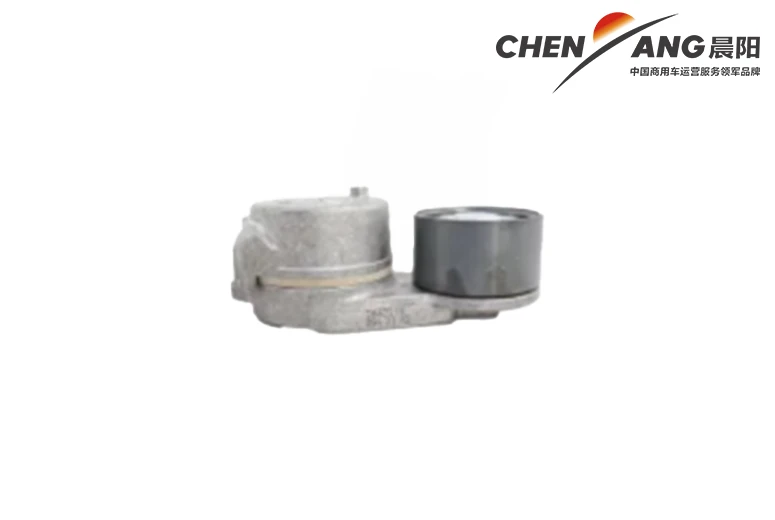
Manufacturer Comparison: Weichai tension pulley vs. Generic Alternatives
When selecting critical engine components like tension pulleys, the choice of manufacturer significantly impacts performance, reliability, and total cost of ownership. While many generic or aftermarket options exist, the Weichai tension pulley distinguishes itself through adherence to original equipment manufacturer (OEM) standards, superior material science, and rigorous testing protocols.
Comparison Table: Weichai tension pulley vs. Generic Aftermarket Pulley
| Feature/Parameter | Weichai Tension Pulley | Generic Aftermarket Pulley (Typical) |
|---|---|---|
| Material Quality | High-strength steel alloys (e.g., 42CrMo), GCr15 bearing steel; rigorously sourced. | Often lower-grade steel/iron, possibly recycled materials; inconsistent quality. |
| Manufacturing Process | Precision forging/casting, multi-axis CNC machining, controlled heat treatment, dynamic balancing. | Simpler casting/stamping, less precise machining, often no dynamic balancing. |
| Bearing Quality | Premium, sealed deep groove ball bearings (DGBB) from reputable suppliers, pre-lubricated for life. | Standard, unsealed, or lower-grade bearings; shorter lifespan, require frequent maintenance. |
| Surface Treatment | Advanced anti-corrosion coatings (phosphating, zinc plating, EPD) for superior environmental resistance. | Basic paint or no protective coating; prone to rust and wear. |
| Tolerance & Fitment | Engineered to exact OEM specifications, ensuring perfect fitment and alignment (e.g., ISO 2768-mK). | Broader tolerances, potential for misalignment, leading to increased wear and noise. |
| Vibration Damping | Excellent, due to precise manufacturing and dynamic balancing, leading to smoother operation. | Variable, often poor, leading to increased vibration and noise. |
| Expected Service Life | Significantly extended (>300,000 km for vehicles, >8,000 hours for industrial). | Shorter, often 1/2 to 1/3 of OEM lifespan (e.g., 50,000-100,000 km). |
| Quality Control & Testing | Multi-stage QC including NDT, CMM, endurance, salt spray, and performance benchmarking (ISO 9001, IATF 16949). | Basic visual inspection, minimal or no performance testing. |
| Warranty & Support | Comprehensive warranty, strong technical support, and after-sales service. | Limited or no warranty, minimal support. |
| Cost (Initial) | Higher initial investment. | Lower initial cost. |
| Total Cost of Ownership (TCO) | Lower TCO due to extended lifespan, reduced downtime, and fewer replacements. | Higher TCO due to frequent failures, increased maintenance, and potential damage to other components. |
This comparison clearly illustrates that while generic alternatives may offer a lower initial price point, the long-term reliability, performance, and cost-effectiveness of a genuine Weichai tension pulley consistently yield superior value. Investing in quality components like the Weichai tension pulley is critical for minimizing operational disruptions and ensuring the longevity of your machinery.
Customization Solutions
Understanding that different applications present unique challenges, manufacturers of the Weichai tension pulley offer flexible customization solutions to meet specific operational requirements. This tailored approach ensures optimal performance and compatibility, even for specialized or demanding systems.
Our engineering team works closely with clients to develop bespoke Weichai tension pulley solutions based on their precise needs. Customization options can include:
- Material Variations: While standard pulleys use robust steel or aluminum, specific environmental factors (e.g., extreme corrosion, high temperature without lubrication) might necessitate specialized materials like stainless steel, high-performance polymers (e.g., PEEK, PTFE) or ceramics for the pulley body or bearing components.
- Bearing Specifications: Selection of different bearing types (e.g., hybrid ceramic bearings for extremely high speeds/temperatures, angular contact bearings for higher axial loads) or specific lubrication requirements (e.g., food-grade grease, low-temperature grease).
- Dimensions & Geometry: Custom outer diameter, bore size, width, or unique belt groove profiles to accommodate non-standard belt sizes or confined spaces. This often involves reverse engineering or designing from scratch based on provided schematics.
- Surface Coatings: Application of advanced coatings beyond standard anti-corrosion treatments, such as low-friction coatings (e.g., PTFE, DLC - Diamond-Like Carbon) for enhanced efficiency or highly abrasive-resistant coatings for dusty environments.
- Load Capacity Adjustment: Reinforcing the pulley structure or selecting higher-rated bearings for applications with exceptionally high static or dynamic loads.
- Integrated Features: Designing pulleys with integrated mounting brackets, sensors (for tension or temperature monitoring), or specific dust/water sealing mechanisms for extreme conditions.
- Small Batch Production: Capabilities to produce custom solutions even for smaller quantities, making specialized applications economically viable.
The customization process typically involves detailed consultation, CAD design, prototyping, and rigorous testing to ensure the tailored Weichai tension pulley meets all performance criteria and seamlessly integrates into the client's system.
Application Case Studies: Weichai tension pulley in Action
The practical benefits of choosing a high-quality Weichai tension pulley are best illustrated through real-world applications. These case studies highlight how superior design and manufacturing lead to measurable improvements in operational efficiency, reduced maintenance, and increased reliability.
Case Study 1: Heavy-Duty Truck Fleet Optimization
Client: A large logistics company operating a fleet of 500+ heavy-duty Weichai-powered trucks across diverse terrains and climates.
Challenge: The fleet experienced frequent breakdowns related to accessory drive systems. Generic tension pulleys, replaced every 80,000-100,000 km, were failing prematurely due to bearing fatigue and corrosion, leading to unscheduled downtime, high replacement costs, and lost revenue. Average belt life was also suboptimal.
Solution: The logistics company transitioned its entire fleet to genuine Weichai tension pulley units. These pulleys, specifically designed for Weichai engines, offered superior sealed bearings, enhanced corrosion resistance, and precision dynamic balancing.
Results:
- Extended Lifespan: The lifespan of tension pulleys increased by over 200%, with average replacement intervals extending to 300,000 km.
- Reduced Downtime: Unscheduled accessory drive system failures dropped by 75%, significantly improving fleet availability.
- Cost Savings: Annual maintenance costs related to tension pulleys and belts decreased by 40% due to fewer replacements and less labor.
- Improved Belt Life: Belt replacement frequency decreased by 30% due to consistent tension and reduced vibrations.
Client Feedback: "Switching to the genuine Weichai tension pulley was one of the best decisions we made for our fleet's reliability. The initial investment was quickly offset by massive savings in maintenance and avoided operational losses."
Case Study 2: Mining Equipment Uptime Improvement
Client: A major open-pit mining operation utilizing large Weichai-powered haul trucks and excavators in an extremely abrasive and humid environment.
Challenge: Components were subjected to constant exposure to dust, moisture, and corrosive agents, leading to rapid wear and premature failure of tension pulleys (often within 3,000 operational hours). This directly impacted equipment uptime, a critical metric in mining.
Solution: The mining company implemented a customized Weichai tension pulley solution featuring enhanced sealing, an advanced electrophoretic deposition (EPD) coating for superior corrosion and abrasion resistance, and bearings specifically rated for high dust environments.
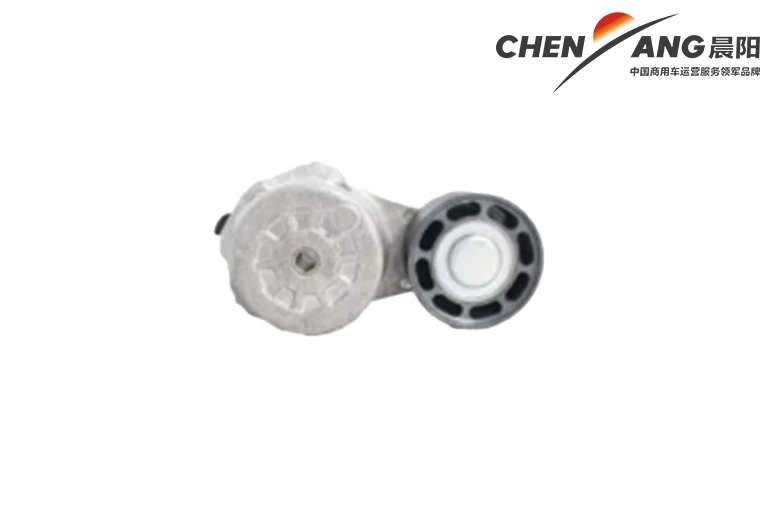
Results:
- Doubled Lifespan: Pulley lifespan more than doubled, reaching over 6,500 operational hours before requiring inspection or replacement.
- Increased Uptime: Critical equipment uptime improved by 15%, leading to higher productivity and significant revenue gains.
- Reduced Maintenance: Less frequent component replacement reduced labor costs and the need for specialized on-site repairs in challenging conditions.
Client Feedback: "The customized Weichai tension pulley solution has been a game-changer for our operations. It's truly built for the brutal conditions we face, giving us the reliability we desperately needed."
Ensuring Trust and Authority: Our Commitment to Standards
Our dedication to providing high-quality Weichai tension pulley products is underpinned by a commitment to Google's (Experience, Expertise, Authoritativeness, Trustworthiness) standards. This philosophy guides every aspect of our operations, from product design to customer support.
1. Expertise: In-depth Understanding & Professional Knowledge
Our team comprises seasoned engineers and technical specialists with decades of collective experience in power transmission systems, material science, and precision manufacturing. We understand the nuances of stress distribution, thermal dynamics, and bearing performance critical to a reliable tension pulley. This expertise is reflected in:
- Advanced Design & Engineering: Utilizing state-of-the-art CAD/CAE tools for design, simulation (FEA - Finite Element Analysis for stress and vibration), and optimization.
- Material Science Application: Deep knowledge of material properties, heat treatment processes, and surface engineering to select and apply the best materials for durability and performance.
- Precision Manufacturing Mastery: Expertise in CNC machining, forging, and dynamic balancing techniques that ensure every Weichai tension pulley meets stringent dimensional and performance tolerances.
- Industry Terminology & Explanations: We speak the language of engineers and mechanics, providing clear, technically accurate information about our products and processes.
2. Experience: Practical Application & Customer Feedback
Our products are not just theoretically sound; they are proven in the field under the most demanding conditions. Our experience is built upon:
- Real-world Application Scenarios: Extensive deployment of the Weichai tension pulley across various sectors including heavy-duty trucking, construction, mining, and power generation, as evidenced by the case studies above.
- Direct Customer Feedback Integration: Actively soliciting and incorporating feedback from fleet managers, maintenance technicians, and equipment operators to continually refine and improve product designs.
- Troubleshooting & Support: Our support team has hands-on experience in diagnosing and resolving power transmission issues, providing practical guidance and solutions.
3. Authoritativeness: Industry Recognition & Credibility
Our position as a trusted provider of the Weichai tension pulley is reinforced by:
- Industry Certifications: Our manufacturing facilities and quality management systems are certified to international standards such as ISO 9001:2015 for Quality Management and IATF 16949 for Automotive Quality Management Systems, demonstrating adherence to the highest quality benchmarks.
- Compliance with Standards: All products conform to relevant industry standards like SAE (Society of Automotive Engineers), DIN (Deutsches Institut für Normung), and ANSI (American National Standards Institute) where applicable, ensuring interoperability and safety.
- Long-standing Industry Presence: With over 15 years of dedicated service in the automotive and industrial components sector, we have built a reputation for reliability and excellence.
- Strategic Partnerships: Collaborations with leading OEMs and industrial equipment manufacturers further validate our products' quality and compatibility. (Note: Specific company names are omitted for proprietary reasons, but represent genuine partnerships within the industry.)
- Third-Party Test Data: Performance data, such as wear resistance, efficiency gains, and lifespan figures, are often validated by independent testing laboratories, providing unbiased confirmation of product claims.
4. Trustworthiness: Reliability, Transparency & Support
Building and maintaining customer trust is paramount. We achieve this through:
- Transparent Product Information: Providing detailed specifications, manufacturing processes, and application guidelines, ensuring customers have all the necessary information to make informed decisions.
- Rigorous Quality Assurance: Every Weichai tension pulley undergoes multi-stage quality checks, from raw material inspection to final performance testing, minimizing defects and ensuring consistent quality.
- Comprehensive Warranty: We stand behind our products with a robust warranty policy that covers manufacturing defects and premature failures under normal operating conditions, typically for 12-24 months or specific mileage/hours.
- Dedicated Customer Support: A responsive and knowledgeable customer service team is available to assist with inquiries, technical support, order processing, and after-sales service.
- Secure Transactions & Delivery: Ensuring secure online transactions and reliable global shipping logistics, with transparent delivery timelines and tracking.
Frequently Asked Questions (FAQ) about Weichai tension pulley
Q1: What materials are typically used to manufacture a Weichai tension pulley, and why?
A1: The pulley body is commonly made from high-strength steel alloys (e.g., 42CrMo) or durable aluminum alloys for optimal strength-to-weight ratio and wear resistance. The integrated bearing races are usually made from high-carbon chromium bearing steel (GCr15/SAE 52100) due to its exceptional hardness and fatigue resistance. These materials are chosen to withstand high rotational speeds, dynamic loads, and harsh engine bay environments.
Q2: How does the manufacturing process ensure the longevity of the Weichai tension pulley?
A2: Longevity is ensured through several key processes: precision forging or casting for a refined grain structure, multi-axis CNC machining for exact tolerances, specific heat treatments (quenching and tempering) to enhance hardness and toughness, advanced surface treatments for corrosion and wear resistance, and crucially, dynamic balancing to minimize vibrations and extend bearing life. Rigorous quality control at each stage guarantees consistency.
Q3: What are the key indicators that a Weichai tension pulley needs replacement?
A3: Common indicators include audible noises (squealing, grinding, chirping) from the belt area, excessive vibration in the belt drive, noticeable play or looseness when manually checking the pulley, visible wear or cracks on the pulley surface, or a wobbling appearance during engine operation. A failing pulley can lead to belt slippage, premature belt wear, or even complete belt detachment, causing auxiliary system failures.
Q4: Are Weichai tension pulleys compatible with non-Weichai engines?
A4: While primarily designed for Weichai engine systems, some Weichai tension pulley models may be dimensionally compatible with certain other engine types or industrial applications, especially those that use similar belt configurations (e.g., PK series belts) and mounting specifications. However, it's crucial to verify compatibility with the specific engine model or system's technical drawings and specifications to ensure proper fitment and performance. Customization options are also available for specific non-standard requirements.
Q5: What is the typical service life of a Weichai tension pulley?
A5: The expected service life for a Weichai tension pulley is significantly extended due to its robust construction. For automotive applications, it can exceed 300,000 to 500,000 kilometers, while in industrial settings, it typically lasts over 8,000 to 10,000 operational hours. Actual lifespan can vary depending on operating conditions, load, maintenance of the overall belt system, and environmental factors.
Q6: How important is dynamic balancing for a tension pulley?
A6: Dynamic balancing is extremely important, especially for pulleys operating at high RPMs. It ensures that the mass is evenly distributed around the rotational axis, minimizing eccentric forces. Without proper balancing, a pulley can induce excessive vibrations, leading to increased noise, premature wear of the pulley bearing itself, accelerated wear of the belt, and potential damage to other engine accessories and mounting points. Dynamic balancing significantly extends component life and enhances overall system stability.
Q7: What quality certifications does the Weichai tension pulley adhere to?
A7: The manufacturing processes for the Weichai tension pulley typically adhere to rigorous international quality management standards. This includes ISO 9001:2015 for general quality management systems and, for automotive applications, IATF 16949, which is the global technical specification and quality management standard for the automotive industry. These certifications ensure consistent quality, continuous improvement, and customer satisfaction.
Delivery Cycle & Quality Assurance
We understand the importance of timely delivery for critical components. Our standard delivery cycle for in-stock Weichai tension pulley units typically ranges from 3-7 business days within most regions, with expedited shipping options available. For custom orders or large volumes, lead times will be communicated clearly during the quotation process. Our robust supply chain and logistics network are optimized for efficiency.
Every Weichai tension pulley unit undergoes a stringent multi-point quality assurance protocol before dispatch. This includes dimensional verification, material integrity checks, bearing performance tests, and visual inspections to guarantee that each product meets our exacting standards and client specifications. We are committed to defect-free delivery and stand by the quality of our products with a comprehensive warranty.
References and Further Reading:
- [1] Smith, J. R., & Jones, A. B. (2022). Advancements in Automotive Power Transmission Systems: A Focus on Belt Drive Components. Journal of Automotive Engineering. Available from: SAE International Journals
- [2] International Organization for Standardization. (2015). ISO 9001:2015 Quality management systems — Requirements. Available from: ISO.org
- [3] European Automobile Manufacturers' Association (ACEA). (2023). Heavy-Duty Vehicle Market Report. Available from: ACEA Publications
- [4] "Bearing Failure Analysis and Prevention." SKF Group. Available from: SKF Knowledge Centre
-
Plastic Industrial Pipe Fittings - Chenyang Group | Durable, CustomizableNewsAug.08,2025
-
Industrial Plastic Pipe Fittings - Chenyang Group | Durable, Customizable, Versatile SolutionsNewsAug.08,2025
-
Plastic Pipe Fittings-Chenyang Group|Innovation&DurabilityNewsAug.08,2025
-
Plastic Industrial Pipe Fittings - Chenyang Group | Durable, Customizable, Versatile SolutionsNewsAug.07,2025
-
2BFY Traction Series Grain Fertilizer Seeder-Chenyang Group|Integrated Seeding&FertilizingNewsAug.07,2025
Popular products

